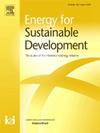中国天然气资源型省区“可能三角”评价:时空分异研究
IF 4.9
2区 工程技术
Q2 ENERGY & FUELS
引用次数: 0
摘要
资源分布不均造成了“不可能三角”的困境,阻碍了全国天然气工业的高质量发展。实现区域天然气产业的“可能三角”,是推动能源转型的关键。然而,在天然气资源型地区探索“可能的三角”的研究仍然有限。本文提出用安全、经济、绿色协调发展的指标来考察区域天然气产业的“可能三角”。以2011 - 2022年的省级数据为基础,构建了西北天然气产区安全、经济、环境可持续性耦合协调度评价框架及其时空分布特征。研究结果表明,在研究期间,耦合协调度呈上升趋势,从“轻度功能障碍”过渡到“良好协调”。区域差异逐渐缩小,极化效应逐渐减弱。空间上,省际耦合协调水平稳步提高,呈现由外围向中心扩展的空间依赖关系。根据这些发现,提出了政策建议,通过促进政府、行业利益相关者和区域行动者之间的合作,实现“可能三角”。本研究提出了一个中国在全球能源转型中的案例研究,为天然气行业整合安全、经济可行性和绿色政策提供了新的见解。本文章由计算机程序翻译,如有差异,请以英文原文为准。
Assessment of “possible triangle” in natural gas resource-based provinces of China: Spatiotemporal differentiation investigations
The uneven distribution of resources has caused an “impossible triangle” dilemma, hindering the high-quality development of the national natural gas industry. Achieving a “possible triangle” in regional natural gas industries is crucial for promoting energy transition. However, studies exploring the “possible triangle” in natural gas resource-based areas remain limited. The present study proposes using the coordinated development of safety, economic, and green indicators to examine the “possible triangle” of the regional natural gas industry. With provincial data from 2011 to 2022, an assessment framework is developed to investigate the coupling coordination degree of safety, economy, and environmental sustainability, as well as its spatiotemporal distribution characteristics within the natural gas production area in Northwest China. The findings indicate an upward trend in the coupling coordination degree during the study period, transitioning from “mild dysfunction” to “good coordination.” Regional disparities gradually narrowed, with polarization effects weakening over time. Spatially, the coupling coordination levels across provinces steadily improved, exhibiting spatial dependencies that expanded from peripheral regions toward central areas. With these findings, policy recommendations are proposed to achieve the “possible triangle” by fostering collaboration among governments, industry stakeholders, and regional actors. This study presents a Chinese case study on the global energy transition, offering new insights into integrating safety, economic viability, and green policies within the natural gas industry.
求助全文
通过发布文献求助,成功后即可免费获取论文全文。
去求助
来源期刊

Energy for Sustainable Development
ENERGY & FUELS-ENERGY & FUELS
CiteScore
8.10
自引率
9.10%
发文量
187
审稿时长
6-12 weeks
期刊介绍:
Published on behalf of the International Energy Initiative, Energy for Sustainable Development is the journal for decision makers, managers, consultants, policy makers, planners and researchers in both government and non-government organizations. It publishes original research and reviews about energy in developing countries, sustainable development, energy resources, technologies, policies and interactions.
 求助内容:
求助内容: 应助结果提醒方式:
应助结果提醒方式:


